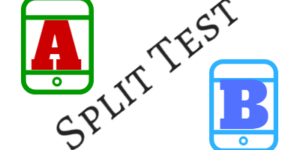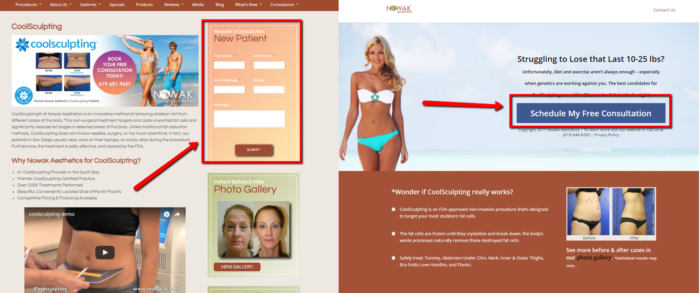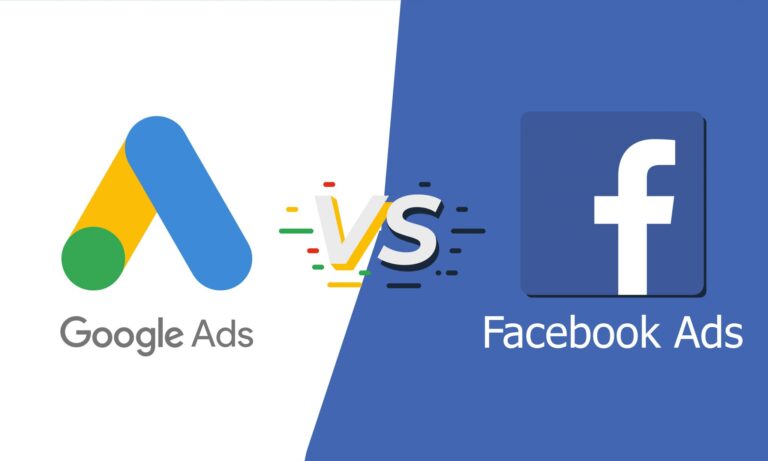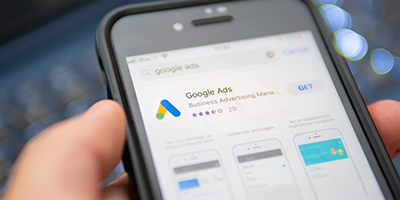
Split testing is best implemented when running campaigns. These can be social ads, Google AdWords ads, or email marketing campaigns, to name a few. Any instance where you can evaluate and compare impressions, clicks, and conversions is worthy of a split test. The best place to split test is arguably Google AdWords, since the advertising platform will automatically shift more of your budget toward your better performing ads.
If you’ve got a strong call to action, such as a monetary discount on a service, why split test? The simple answer is that there’s many different ways you can phrase a call to action. More importantly, there are other ancillary benefits to a service you offer that might appeal more to patients than a discount. The point is, you don’t know until you experiment.
You can see in the screenshot below we’ve run two ads. While the ad that references the monetary discount in the headline is the highest serving ad, surprisingly, the ad that focuses on the longevity of the treatment in headline has the highest click-through rate…
Landing pages also play a vital role when split testing. As you can see in the example below, we’re split testing two unique landing pages for CoolSculpting. One of the landing pages goes directly to the procedure page on the website and the other goes to a unique page that has the navigation “stripped out.” Notice how the calls to action are similar (schedule a consultation), but the landing page on the left has the form embedded in the sidebar and the landing page on the right has a button that – if clicked – displays a pop up form.
Interestingly, I’ve read studies that show the call to action requiring the click or tap of a button convert better than a web form that requires no clicks at all. That may seem counter-intuitive to some, since it takes less steps to fill out a form that’s already appearing, but I think it re-enforces the bottom line with split testing: no matter how much you’ve studied and read about the “perfect” landing page or perfect ad or perfect way to do anything in digital marketing, you simply don’t know how campaign will perform optimally unless you split test.
If you’d like to learn more about split testing, including how to implement a split test for your next campaign, then drop us a line here or give us a call at 877-673-7096 x2.








